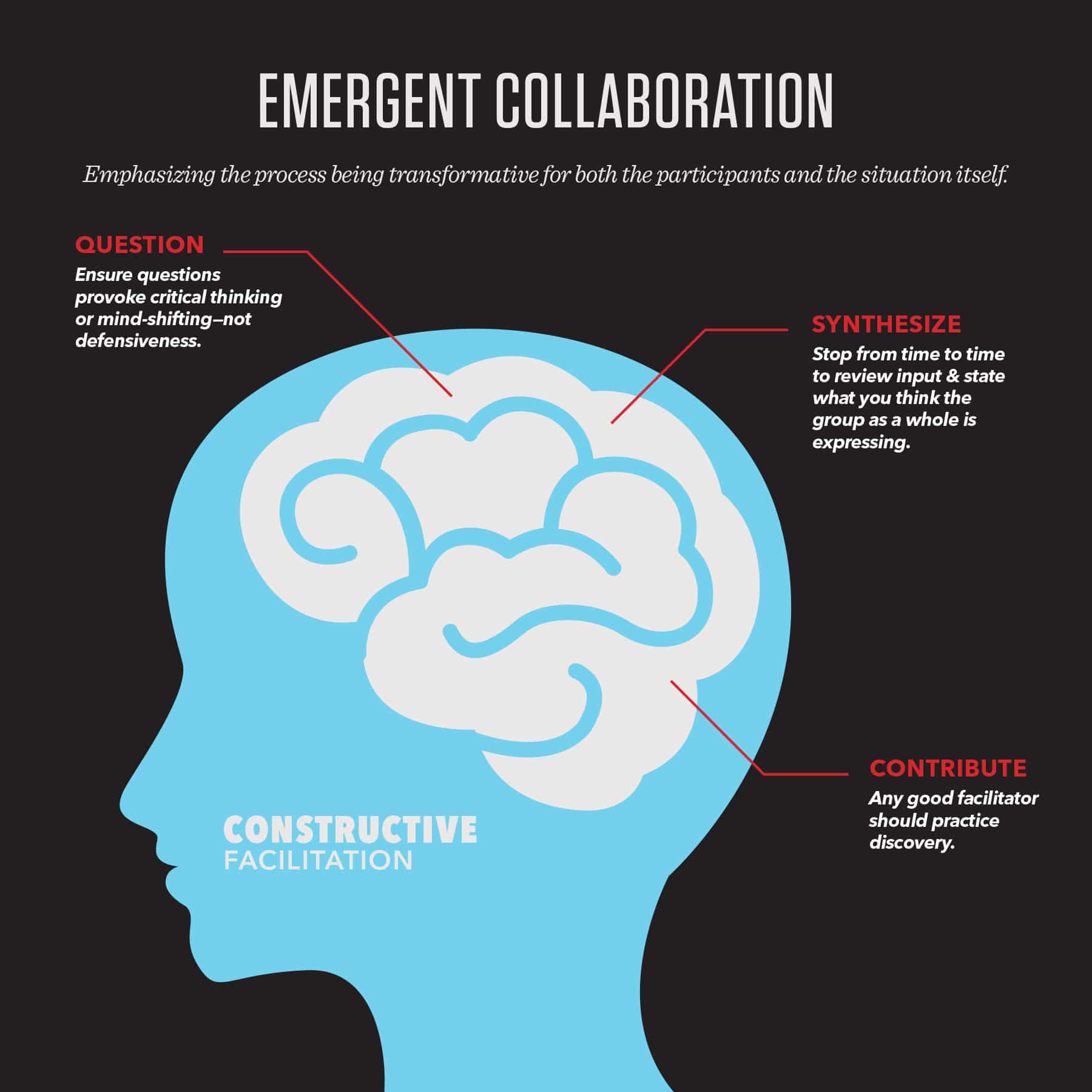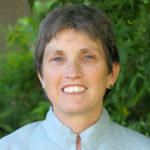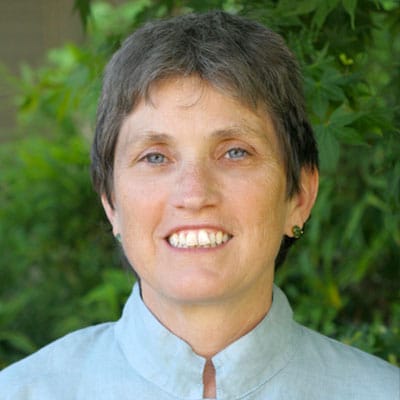Most green building professionals understand the benefit of approaching design solutions collaboratively. Healthy collaboration is inclusive; it starts with the basic assumption that everyone in the room has something significant to contribute and something to learn. In my book, EMERGE: A Strategic Leadership Model for the Sustainable Building Community, this definition of collaboration is just the starting point.
With “emergent” collaboration, emphasis is on the process being transformative for both the participants and the situation itself. There are multiple techniques for achieving this, but an important one is “constructive facilitation.”
Typically the role of the facilitator is to elicit contributions to a discussion of an agreed upon question or set of questions, making sure this input is recorded and then assuring that these answers are fed back to the participants in a useful form.

With constructive facilitation you have permission—and you must get permission!—to question, synthesize, and contribute. This goes beyond making sure everyone is heard. It is more directive, takes some courage, and definitely takes a good sense of humor.
So what is it? With one regional green building organization I worked with, the challenge was getting its local chapters more engaged and working together.
Question
Being willing to interrupt with a question can be especially important when you are facilitating a discussion of a deeply rooted or old issue. That said, you need to ensure your questions provoke critical thinking or mind-shifting—not defensiveness. In the example above, the group immediately homed in on fixing the website. This was a conversation that had been had before, and it really didn’t get to the heart of the matter. I kept bringing the conversation back to: Why weren’t the chapters motivated to be engaged in the first place? Why didn’t they see themselves in the larger picture? What would it look like if they did?
Get Involved
This means stopping from time to time to review input and state what you think the group as a whole is expressing. Your syntheses should be as inclusive as possible and not just reflect the best idea (in your opinion) being put forth. The group may correct your interpretation, and that’s fine. At times in the above regional group example, my syntheses of the previous 20-minute discussion elicited a “Yes! That’s what we mean!” At times it was a “No! Let’s talk about this some more!” In addition to providing clarity and improving the chances of productivity, this exercise encourages the group to think consensually.
Contribute
Any good facilitator should practice discovery. Prior to the event, I conduct an online survey; barring that, I interview key individuals in the group. I am also a strong proponent of using facilitators with content knowledge. In other words, in the example above, it means using a facilitator who understands the green building movement and the issues it faces. I have suffered discussions facilitated by someone who was familiar with all the “tricks of the trade” in getting people to share, etc. but could not intelligently question, synthesize, and contribute to the discussion in any meaningful way. As a “constructive” facilitator, you will be able to model positive and meaningful contributions, enhancing the chances of a productive discussion.
Kathleen O’Brien brings 30-plus years as an award-winning educator, writer, strategic planner, and project consultant in the green building field to The EMERGE Leadership Project, a 501c3 nonprofit she founded to build leadership capacity within the sustainable building community. The project’s ultimate goal is to “accelerate the adoption of life-sustaining solutions in the built environment through emergent leadership.” EMERGE: A Strategic Leadership Model for the Sustainable Building Community is her second book; her first book, The Northwest Green Home Primer, was published in 2008.
 Kathleen O’Brien brings 30-plus years as an award-winning educator, writer, strategic planner, and project consultant in the green building field to The EMERGE Leadership Project, a 501c3 nonprofit she founded to build leadership capacity within the sustainable building community. The project’s ultimate goal is to “accelerate the adoption of life-sustaining solutions in the built environment through emergent leadership.” EMERGE: A Strategic Leadership Model for the Sustainable Building Community is her second book; her first book, The Northwest Green Home Primer, was published in 2008.
Kathleen O’Brien brings 30-plus years as an award-winning educator, writer, strategic planner, and project consultant in the green building field to The EMERGE Leadership Project, a 501c3 nonprofit she founded to build leadership capacity within the sustainable building community. The project’s ultimate goal is to “accelerate the adoption of life-sustaining solutions in the built environment through emergent leadership.” EMERGE: A Strategic Leadership Model for the Sustainable Building Community is her second book; her first book, The Northwest Green Home Primer, was published in 2008.

